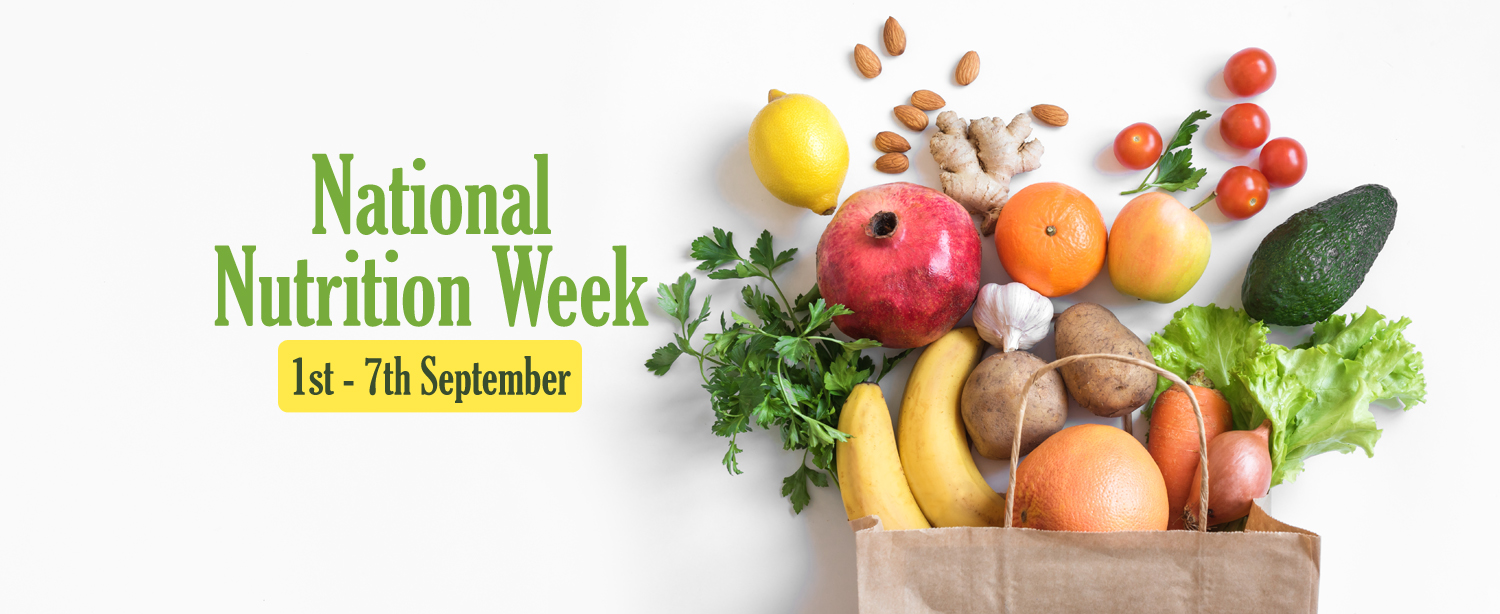What did you eat for lunch today? And what did you have for breakfast? Are your meals a balance of essential food groups, are your meals planned well or are they quick fixes that contain fewer nutrients and comprise mainly of packaged foods. Do your busy schedules leave you little time to eat healthy? Do you often rely on junk food and takeaways for your daily meals? It is time to change this. Eating right is even more important than exercise, and the combination of a balanced diet along with the right amount of exercise can do wonders to your body. Self-realization is important to make conscious food choices. This National Nutrition Week let us come together and spread awareness about the importance of healthy eating habits and good nutrition to maintain a healthy lifestyle and reduce your risk of lifestyle diseases.
Are you eating right?
A balanced diet provides your body the appropriate number of nutrients. 50–60% of the total calories should ideally come from carbohydrates, followed by 10%–15% from protein, and 20–30% from fat. Vitamins, minerals, antioxidants, and fibre should also be a part of your diet. Depending on the person’s gender, age, and specific needs, the body has different nutritional needs. Pregnant women and highly active individuals, and young children frequently have increased nutrient needs.
Healthy nutrition tips
A healthy diet is important to support and strengthen your immune system. Nutrients such as proteins, vitamins, carbohydrates, fibres, fats, minerals, and water must be an essential part of your diet to maintain a healthy immune system and strengthen your body. Consistent healthy eating habits can reduce the likelihood of developing health problems such as obesity, heart disease, diabetes and certain types of cancer. Follow these healthy eating tips:
- Eat local produce
Increase your intake of locally available and seasonal fruits, vegetables, and whole grains near your region and reduce your intake of processed foods. Eat a rainbow, the more colourful the diet the more antioxidants it includes. - Explore traditional foods
You don’t have to find fancy ingredients to eat healthy. Instead choose simple but nutritious Indian millets that include jowar, bajra, ragi, etc as a part of your daily diet. - Eat a variety of food
You must include a mix of wholegrains like wheat, maize and rice, legumes like lentils and beans, and plenty of fresh fruit and vegetables in your diet. Choose unprocessed foods as much as possible. - Limit your salt intake
Limit your salt intake to 5 grams or a teaspoon a day. Further, when cooking and preparing foods, use salt sparingly and reduce the use of packaged salty sauces and condiments as they are usually high in sodium. - Eat moderate healthy fats in moderation
Replace butter with healthier fats like olive, soy, sunflower or corn oil when cooking. Avoid processed, baked and fried foods that contain trans-fat. Choose steaming, roasting or baking instead of frying food when cooking. - Limit sugar intake
Limit intake of sweets and sugary drinks such as fizzy drinks, fruit juices, energy and sports drinks, flavoured milk drinks. Use jaggery, honey, dates, and raisins to sweeten you desserts instead of refined sugar. - Stay hydrated
Drinking enough water can help improve many of your bodily processes and is essential for optimal health. Drink water whenever thirsty and avoid sipping on juices, fizzy drinks or alcoholic drinks.
Nutrition services at Kokilaben Dhirubhai Ambani Hospital
Get expert personalised advice from our team of doctors at the Department of Nutrition Therapy at Kokilaben Dhirubhai Ambani Hospital for further assistance and care. Please find below the link: https://www.kokilabenhospital.com/departments/clinicaldepartments/nutritiontherapy.html


